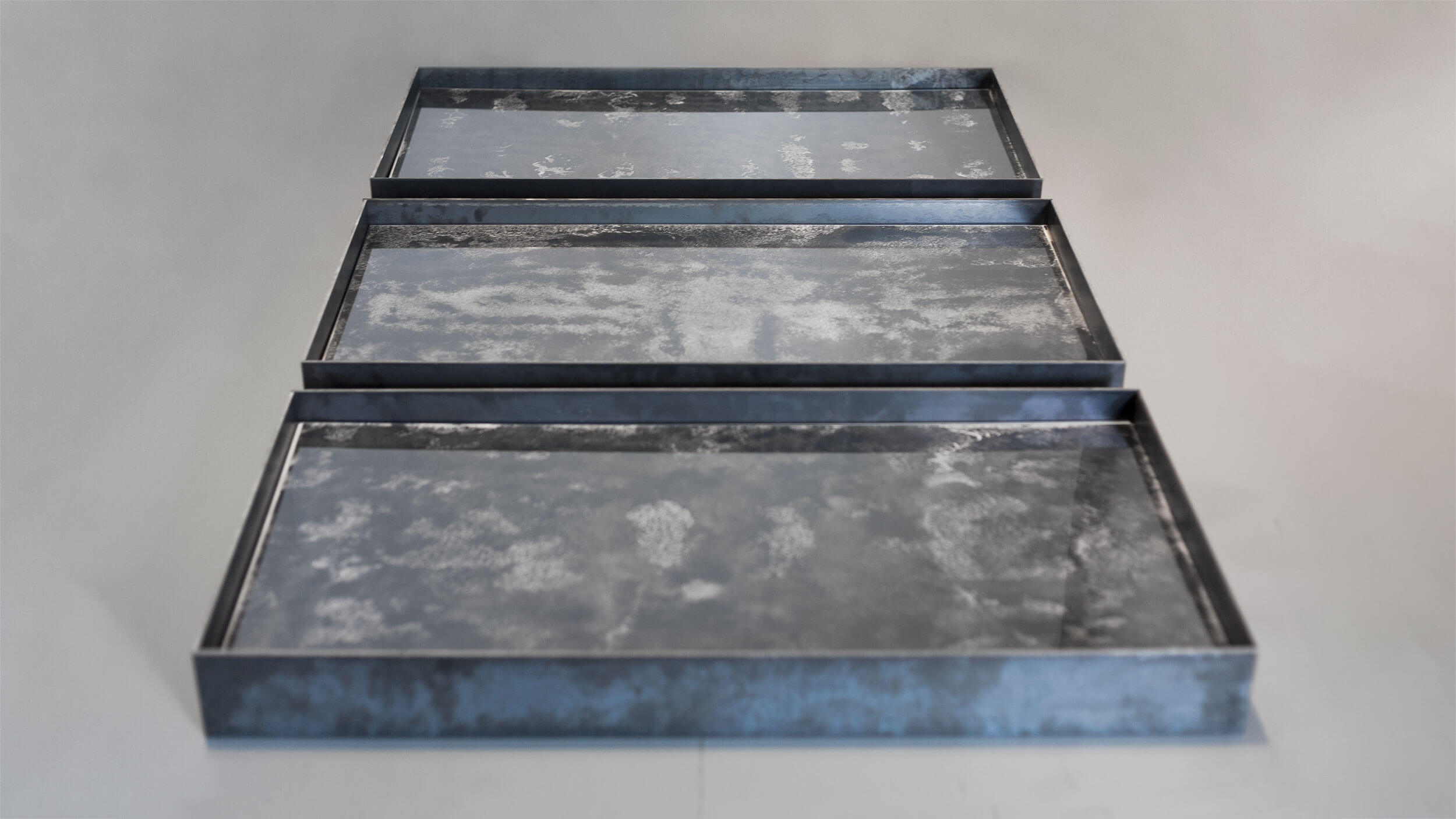Prints

︎
Each print is a memory, a recording of some force, some event preserved on the surface. Particles that at one moment are static, at the next moment take on the form of some event that is preserved in their shape. Stimulated by sound, they move, creating patterns, shapes and textures.
︎The video shows the process of making a sound print by using powder toner, used in laser printers and a Chladni plate, constructed from two speakers and a plexiglas plate. The work exploits sound waves to create a rich textured aleatoric surface. By setting up the parameters and using the force of sound waves, the artist separates himself from expressive process of creation and limits his physical presence in the final piece.


Prints is a series of works which use different aleatoric printing techniques, as a source for its study of the printing medium. Considering that prints are by their nature recordings of different information on a particular surface, it is only logical that the whole process of making Prints is thoroughly recorded/documented and that it functions as a standalone video work.
There is a particular level of performativity present in the printing process of Prints that is reminiscent of the Richard Serra’s performative actions of throwing melted lead in the corners of the room, from 1968, entitled Splashing. The similarities don’t stop on the performativity of the printing process but also extend on the final result in the form of the raw texture of the printed surface. The burned laser toner on the surface of Prints has similarities with the melted lead surfaces of Serra’s Splashing. Unlike the Serra’s work, in which raw industrial materials and processes are used, Prints use common goods and office supplies as materials for their realization.
Prints are created on a custom build modification of the Chladni plate. Different frequencies and sounds played through the Chladni plate, result with different images on the surface of the paper. The technology used for printing and preserving the image is similar to laser printer technology in terms of using the laser printer powder toner as printing medium and quartz lamps to fix the powder on the paper.
There is a particular level of performativity present in the printing process of Prints that is reminiscent of the Richard Serra’s performative actions of throwing melted lead in the corners of the room, from 1968, entitled Splashing. The similarities don’t stop on the performativity of the printing process but also extend on the final result in the form of the raw texture of the printed surface. The burned laser toner on the surface of Prints has similarities with the melted lead surfaces of Serra’s Splashing. Unlike the Serra’s work, in which raw industrial materials and processes are used, Prints use common goods and office supplies as materials for their realization.
Prints are created on a custom build modification of the Chladni plate. Different frequencies and sounds played through the Chladni plate, result with different images on the surface of the paper. The technology used for printing and preserving the image is similar to laser printer technology in terms of using the laser printer powder toner as printing medium and quartz lamps to fix the powder on the paper.
Certain amount of laser toner powder is dispersed across the paper that is laid on the Chladni plate – a Plexiglas plate on top of the two audio speakers. The goal is to produce prints with a high physical presence without concrete physical interaction, eliminating gestures, composition, and human impact. By setting up the parameters of the work, and letting it determine the formal presence of the work, its look and final result, I am separating myself from the creative process of image making and abstracting it to the level of pure concept and in the same time having the characteristics of expressive print as a mere technological outcome.
Each print is a memory, a recording of some force, some event preserved on the surface. Particles that at one moment are static, at the next moment take on the form of some event that is preserved in their shape. Stimulated by sound, they move, creating patterns, shapes and textures.
Printing setup
• Chladni plate
(Two audio speakers with modified membranes, Plexiglas plate)
• Audio amplifier
• Quartz lamps
Prints
• Laser printer powder toner
• Steel frames
• 100x50cm
Each print is a memory, a recording of some force, some event preserved on the surface. Particles that at one moment are static, at the next moment take on the form of some event that is preserved in their shape. Stimulated by sound, they move, creating patterns, shapes and textures.
Printing setup
• Chladni plate
(Two audio speakers with modified membranes, Plexiglas plate)
• Audio amplifier
• Quartz lamps
Prints
• Laser printer powder toner
• Steel frames
• 100x50cm



Project realised in the context of the KulturKontakt Austria (KKA) Artists in Residence scholarship programme
